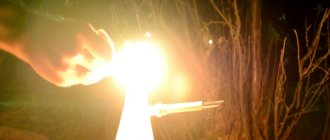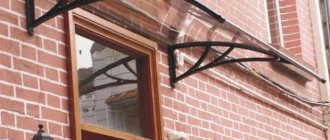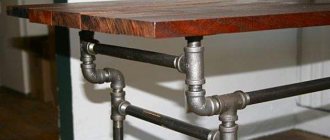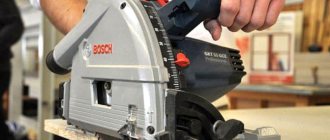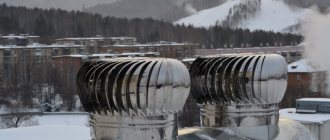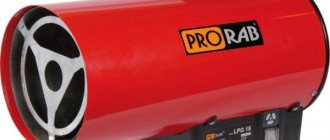Gas-burner. The main tool for built-up waterproofing
Installing a soft roof using adhesive compounds is an unproductive task, especially if the covering area is more than 100 m2. Some types of coatings, for example, those made from oxidized bitumen on a glass-polymer base, are generally difficult to glue, and the strength of the seam turns out to be very low. However, there is an alternative - fusing a soft roof with a stream of open flame. The method is effective and universal, but its implementation requires a special gas burner for roofing work.
Classification of gas burners
Burners can be not only gas, but also liquid.
In the latter case, they run on diesel fuel, but are less common, since their effectiveness appears only at ambient air temperatures reduced to +10...+15ºС. Burners of this type are distinguished according to the following characteristics:
- According to the type of combustible mixture used. In addition to the mentioned liquid and gas ones, combined designs are also used, when air or oxygen is supplied to the working area simultaneously with flammable gas (propane and, much less frequently, acetylene).
- By the number of working nozzles. Gas burners for roofing work can have from 1 to 4 nozzles. In the latter case, the technological capabilities of the device are expanded (for example, the width of the roll material), but at the same time the consumption of combustible gas increases.
- By the presence or absence of a gearbox. Gearless burners, although structurally simpler, do not have the function of regulating the gas flow, which is inconvenient in the practice of their use.
- By the method of igniting a gas stream. Modern designs of the devices in question have a piezo ignition unit, which is much more functional than using a match or lighter for the same purposes.
- According to the design of the gas supply tube. It can be straight or bent at an angle, normal or shortened length.
Such burners operate from cylinders. A reducer or other gas distribution device is installed on the cylinder. For propane cylinders, with a small amount of work, it is possible to install them on the roof; in other cases, hoses are used, the length of which should not exceed 12...15 m.
Most designs of propane torches for roofing can be used for other purposes, for example, for removing old paint (successfully replacing a blowtorch), for heating copper or brass pipes before welding, for heating cooled bitumen, etc.
Being devices that operate using flammable and explosive mixtures, industrial versions of gas burners are manufactured according to the technical requirements of GOST 17356-89. The standard standardizes the following performance indicators:
- One hundred percent tightness of shut-off bodies that control the gas supply;
- Smooth propane supply;
- Presence of wind protection against spontaneous blowing;
- Reliable shutdown of the device and response time;
- Thermal power control limits.
Rules for the safe operation of propane cylinders
- When using and storing, do not allow the cylinders to overheat (for example, leave them in direct sunlight for a long time);
- It is not recommended to bleed out the propane-butane mixture until the tank is completely empty (under certain conditions it can suck in air, and this is dangerous);
- When transporting, be sure to use plugs and safety caps;
- in case of detection of dents or other defects, the product must be sent for an unscheduled recheck;
- Individuals are allowed to transport no more than five cylinders in one vehicle (they must be separated by spacers from each other).
- It is necessary to constantly monitor the condition of the cylinders, because it is not for nothing that they are considered fire and explosive objects.
What is the gas pressure in a propane tank?
According to GOST 15860-84, the working pressure in the tank should not exceed 1.6 MPa. In this case, the proportion of propane in the hydrocarbon mixture must be no less than 60%. This is very important for the safe operation of gas cylinder installations. Of course, products are designed for significantly higher pressures - more than 5.0 MPa. Production and periodic tests are carried out under a pressure of 3.0 MPa.
Refueling standards
At gas cylinder refilling stations, employees are familiar with the regulations. Since a cylinder that is filled too much can explode or its valve can be torn off. So, if you refuel from a reliable supplier, you have nothing to worry about.
| Cylinder type (l) | 5 | 12 | 27 | 50 |
| Maximum permissible quantity of propane, l | 3,5 | 8,4 | 18,9 | 35 |
Design
The components of a gas burner for roofing work are considered using the example of a combined gas-air burner with air intake from the environment. The structure of such a device includes:
- A chamber for preheating fuel, into which an electric heating element with a current regulator is hermetically mounted. The unit is equipped as an option if most of the roofing operations will be carried out at low ambient temperatures.
- A housing made of heat-resistant steel, in which the propane jet is mixed with air.
- An injector connected to the body using a union nut with a reliable seal.
- A control valve that constantly monitors the current values of propane pressure entering the burner mixer. During long breaks in operation, the gas supply is turned off.
- An extension tube into which the ignited mixture is supplied from a flow divider mounted immediately behind the nozzle.
- A mouthpiece, the shape of which determines the width of the combustible mixture emerging from the burner nozzle. The mouthpiece also provides wind protection for the jet.
- A valve that controls the supply of gas-air mixture and flame length.
- Handles, which are made of heat-resistant plastic.
In addition, the delivery package for a gas burner for roofing work may include a replaceable injector, a set of paronite gaskets and a connecting clamp for the cylinder. Most designs of these units are designed for propane cylinders (welded steel, capacity 50 liters according to GOST 15860-84). To operate such burners, you will also need a one-stage balloon reducer (for example, BPO 5-3) and a first-class combined rubber hose in accordance with GOST 9356-75 with a diameter of 9 mm, with a thread braid.
The roof burner is operated in the following sequence. Before starting, check the tightness of the sealing gaskets by passing air through the burner. If necessary, the O-rings are replaced, sealed with sealant, and used no earlier than a day later.
When you turn on the propane burner, first open the air supply valve, then the gas supply valve, and then use a lighter, match or piezo ignition system to ignite the air-gas mixture. By moving the divider, the required length of the torch is adjusted, and using the mouthpiece, the width is adjusted. If required, install an adapter in the form of a bell with several working nozzles on the mouthpiece. Disabling the device is done in the reverse order.
Connecting the hose to the gas stove
To connect the hose to the stove, look at the back of the stove. Here you can see the inscription “exit”. You will immediately need to determine what type it is. Perhaps it will be made absolutely straight or have a slight angle.
This is very important, so the hose is not allowed to bend too much. If the pipe is located a little to the side, and the outlet is made straight, you will have to purchase an additional metal elbow with thread
When the thread diameter is 3/4 inch, you will also need to install an adapter (foot) with a diameter of half an inch.
Usually in all kitchens the gas riser is installed in a certain corner. A welded tube equipped with a ball valve extends from it to connect a gas hose.
The union nut is screwed onto the tap. When the faucet has an internal thread, the hose must screw into it.
Before connecting a hose to the “output” of the system, you need to install a paronite gasket. It is usually sold as a set.
But it is better to purchase such a gasket on the market, equipped with a metal mesh. It will serve as protection against possible contamination.
Having installed the gasket, the flexible hose is screwed to the outlet of the stove and tightened with an open-end wrench.
Then a gas leak check is carried out. All connections must be thoroughly washed. Open the tap and let in the gas. The absence of bubbles at the connections indicates that the system is ready for use.
Choosing a torch for roofing work
The main operational characteristics of gas burners for roofing work are:
- Propane consumption, kg/h.
- Thermal power of the burner, kW.
- Limits of torch length adjustment, mm.
- The largest heating width of roofing felt or other material used for laying soft roofing.
- Nominal surface heating temperature, ºС.
- Specific fuel consumption per unit of covered surface, kg/m2.
- Burner weight, kg.
The parameters are selected for ease of use. For example, a burner that weighs more than 1.5...2 kg is simply inconvenient to work for a long time. The length of the torch is determined in the same way. Usually this parameter is taken within the range of 300...900 mm, and in the latter case the burner can be operated while standing.
A number of characteristics depend on the heat capacity of the soft roofing material. In particular, for roofing felt to be ready, temperatures of 160…180ºС are required, and for surfaced materials – 300…350ºС.
For the productivity of the process, the relationship between the thermal power of the burner W (indicated in the product passport) and gas flow V (this parameter is important for propane cylinders) is important. To calculate, you can use the dependence
Q = 12.88 kWh/kg – calorific value of propane;
n is the number of nozzles/sockets through which the burning gas-air mixture is directed to the heated (or melted) roofing material;
η = 0.8…0.91 – efficiency of the heating process (with an increase in the number of nozzles, the efficiency decreases).
The most popular models of gas burners for roofing are:
- GV-850. It has a control valve for gas supply; the length of the torch is easily controlled using a lever. The power of the burner allows it to be used effectively also for heating metal-plastic pipes and for preparing copper alloys for welding or soldering. Price – 1700...2200 rubles;
- GGS-1-1.7. It is popular due to the high heating temperatures achieved, simplicity and reliability of the design. Price - 2000...2200 rub. A version of the same device, but with 4 bells and a roller, will cost 12,000...12,500 rubles;
Propane burner Ø40 with valve Sigma 2902121
| Nozzle diameter | 40 mm |
| Burner length | 600 mm |
| Flame temperature | 1200 °C |
| Trademark | Sigma |
| Type | Propane burner with valve |
| Average gas consumption | 1800 g/h |
| Thermal power | 19.5 |
| Packaging dimensions | 660 mm x 80 mm x 25 mm |
| Gross weight | 460 g |
| Photo | vendor code | Nozzle diameter | Burner length | Flame temperature | Price, UAH | Buy |
| 2902121 | 40 mm | 600 mm | 1200 °C | 291 00 UAH | ||
| 2902131 | 50 mm | 710 mm | 1400 °C | 305 00 UAH | ||
| 2902141 | 60 mm | 720 mm | 1850 °C | 318.00 286 00 UAH | ||
| 2902151 | 76 mm | 830 mm | 1850 °C | 361 00 UAH |
Propane burner Ø40 with valve Sigma (2902121)
designed for laying, drying, heating roofing materials, as well as for performing waterproofing work, etc. In addition to the traditional screw power regulator, the burner is equipped with an instant flame increase lever. Operates from reusable cylinders of 5, 12, 27, 50, 100 liters (via a hose/reducer). To connect the roofing burner to the cylinder, you can use a hose of any length.
Advantages:
- Quick and easy burner installation;
- A special burner nozzle allows you to obtain the most concentrated heating spot;
- The burner is equipped with a screw power regulator and a lever for instantly increasing the flame;
- The components responsible for the tightness are made of brass, which ensures reliable tightness of the burner;
- The ergonomic handle ensures comfortable operation.
You can buy a Sigma burner by placing an order in our online store using a simple form, delivery is carried out throughout Ukraine. If you have any questions, you can call the indicated phone numbers or request a call back. Our online store specialists will provide you with detailed advice and help you make the right choice.
- 40 mm
- 1200ºС
- 1800 g/h
Gas-burner
Hello, I don’t know what it’s called correctly, a gas burner or something like that connected to a cylinder, it’s used for fusing a roof, etc. What’s the secret? I bought this or a similar burner, a stick with a nozzle or a glass type at the end, at the other end there is a tap, a fitting, connected to a gas cylinder with a hose, I light it, it burns but sluggishly, not so much with pressure, in the end I had to take a blowtorch and use it to heat up the material being deposited . Tell me, what’s wrong is the wrong gas or burner? Regular gas - a gas cylinder for a summer residence. Explain thank you
wrong connection, correct connection.
Is it all about the gearbox? Where are these sold or what are they called to find them? Thank you
2312 wrote: Where are these sold or what are they called to find them?
Propane reducer » > Usually sold in the same place as burners and cylinders
Accidentally looked into the topic, terrible. Where people are looking. . kapelka.k, and Viktorich, what nafik gearboxes are on a gas burner? Everything is straight there. If it’s not on topic, then why bother hitting the computer keys. But the vehicle has a problem with the burner, hose or cylinder.
The bachelor wrote: If you’re not on topic, then why bang on the computer keys.
I have a gearbox, the cylinder is used once every 5 years, the roof is repaired and food is prepared regularly
Viktorich wrote: the cylinder is used once every 5 years, the roof needs to be repaired
I can’t imagine what kind of flame you can get on a burner through a reducer. Probably only the kind that burns in pauses between work—the wick.
The bachelor wrote: I can’t imagine what kind of flame you can get on a burner through a reducer.
They answered it themselves, only for some reason before they asked.
The bachelor wrote: If you’re not on topic, then why bang on the computer keys.
Gearboxes are DIFFERENT. The one in the second photo and those in the link could help you “imagine”.
VV wrote: Gearboxes are DIFFERENT.
Just explain why he is there if he is not needed there. In the vehicle, even without a gearbox, the burner burned sluggishly, but in your opinion it turns out that with a gearbox it will burn more intensely, like the reducer will increase the pressure at the outlet, so in your opinion?
The bachelor wrote: Even without a gearbox, the burner burned sluggishly on the vehicle
The TS doesn't say anything about the gearbox. It is quite possible that the vehicle was connected, as he writes “with a hose,” to the cylinder through a household reducer. In this case, all the symptoms indicated by him will appear. Therefore, all the advice (before your arrival) was devoted to the topic of replacing a household gearbox with a specialized one.
The presence of an adjustable reducer between the burner and the cylinder will not cause harm. It will only increase the security of the system.
VV wrote: It is quite possible that the vehicle was connected, as he writes “with a hose,” to the cylinder through a household reducer.
Why speculate on something that is not written?
VV wrote: The presence of an adjustable gearbox between the burner and the cylinder will not do any harm. It will only increase the security of the system.
How many propane burners have I seen in operation, none of them had a reducer on the cylinder. And I myself manage without it. If gas is consumed quickly, it will also freeze. Although why am I blabbering - use the gearbox, amen
The topic is old, but someone will read the “advice from experienced people”. If you don't have a gearbox, then maybe you can do it without a burner? Light the tip of the hose and spray it with a stream of fire. But, probably, it is not for the sake of bells and whistles, like a spoiler on a 9, that they are obliged to install a gearbox. And not an ordinary gearbox, atmospheric, but adjustable!
MihVik wrote: The topic is old, but someone will read the “advice from experienced people.” If you don't have a gearbox, then maybe you can do it without a burner? Light the tip of the hose and spray it with a stream of fire.
MihVik, What are the problems? Just write a will, don’t forget. Gas, like electricity, is a dangerous thing and does not forgive neglect.
Without a gearbox this is understandable, I also worked without a gearbox and heated a propane tank with a burner, although it is prohibited. If it is possible to install a gearbox, then it should be installed. Saving and gas consumption. Moreover, if you use a regular roofing torch, but what if you use a Gorynych?
Welder Joe wrote: Moreover, if you use a regular roofing torch, but what if you use a Gorynych?
If you work like Gorynych, then what kind of gearbox pulls him? That's what the expense will be. The cylinder will probably freeze over anyway
How many Parsyuks have been smeared with a gas torch. And me, and neighbors, and acquaintances. Never installed any gearboxes. To be honest, I don’t know that there were any accidents. In principle, it would be possible to set fire to the gas at the end of the hose coming from the cylinder. Nothing bad would have happened anyway! The burner, namely its “glass” at the end, is designed to mix the burning gas with air and, naturally, the oxygen contained in it, sucked into the “glass” through the holes located in the rear part of it. Otherwise, you will not get the temperature that the burner gives and a blue torch. Plus, the “glass” of the burner prevents the torch from falling off the nozzle. If we ignite the gas coming out of a hose under high pressure, we will get a huge, smoky torch of yellow-orange color, which will go out with every sudden movement of the end of the hose. Something like this.
The bachelor wrote: And the vehicle has a problem with the burner, hose or cylinder.
For some reason I didn’t see a word about the gearbox in the TS post. Typically, roofers never use a reducer, but connect the burner through an adapter, without any reducers, in order to squeeze all the gas out of the cylinder. Although according to safety regulations it is necessary to use gearboxes of the BPO type. But they usually work without them. The vehicle could connect the burner through a regular household frog-type gearbox. BUT let's not guess what the vehicle will say about the gearbox.
Crosser CR8E Mantis TS-350 with Lombardini diesel engine
You'll have to wait a long time, the post is rotten, 3 years have passed. BPO can limit pressure, but pressure is pressure, but it also greatly reduces throughput. a large burner already puts the cylinder on the shoulder blades, even at above-zero temperatures, you have to heat it up so that the torch is not impotent, and then there’s this “cow saddle”
And how will it interestingly help in the field of security? An extra link.
Notch it on your forehead, the gas doesn’t burn or explode, you can at least stuff cigarette butts into the cylinder
It is dangerous only in the form of a gas-air mixture, and at a certain concentration, which to obtain in street conditions, one must be really gifted, no less than a Darwin Award laureate
Vasily.N wrote: You'll have to wait a long time, the post is rotten, 3 years have passed. BPO can limit pressure, but pressure is pressure, but it also greatly reduces throughput. the large burner already puts the cylinder on the shoulder blades, even at above-zero temperatures, you have to heat it up so that the torch is not impotent, and then there’s this “cow saddle”
Which burner, cylinder and reducer should I buy for roof repair?
To be useful for something else later
Well, the burner is up to your taste. It could be simpler. I have six different ones (I used to work on roofing). Both homemade and purchased. I like Samopal better. I made it for myself. You can use a 40-liter cylinder. If you later take it to the dacha to use it. Or borrow someone’s thread for a while. A frog gearbox. I’ve never installed a gearbox at all. I fried it to the fullest. But this experience is needed. Take the material with fiberglass at least. Do not take it with fiberglass. It is not tensile strength. Roll the roll toward you. Then you can see how much you melt the base and the roll. Before applying the sticker, I rewound a roll of 100 HDPE pipe. Then it does not flatten and rolls evenly. You pull it towards you with a kind of stick. A stick with a hook at the end. If you have any questions, I will answer.
Mikael Thank you for sharing such subtleties. GLASS FABRIC AND GLASS CANVAS for me, even by ear, there was practically no difference. Then the logical question is what is GLASS FABRIC? I read about TechnoNIKOL - is this it?) Then I read about all sorts of safe plastic cylinders, like they don’t explode and they’re lightweight. Maybe they had experience? And how much container volume is usually needed to glue fiberglass on an area of about 25 square meters of the garage roof? And then I have one big bike from transport
If it’s not difficult, please tell me the brand of the burner and cylinder and the reducer)
If you have an assistant, then you don’t need either a cylinder or a burner. You light a blowtorch and work with it. One heats, the other rolls out. I built a garage like this myself, but, I admit, my hands ached from the lamp after work. The burner was never needed again, and the lamp - Yes.
This is a brand company. It has a lot of different materials.
Igoryan wrote: if it’s not difficult, please tell me the brand of the burner and cylinder and also the gearbox)
Type: propane roofing burner, you’ll see for yourself. I don’t know how to give a link. There are normal burners even for 500 rubles. It’s a thousand times more convenient than a blowtorch; you don’t have to stand there while melting. For a 25 square meter roof you need 5-8 liters of propane. For us, 40 liters was enough for 15 rolls -140 square meters of roof.
Which cylinder to take depends on the amount of work; if you don’t need it later, you can rent it. If you don’t have a summer house with a gas stove, I would take 12 liters, or 2 pieces of 5 liter ones, then you can take it with you fishing. The gearbox is quite household. » >
Yesterday I picked up three of these at the ferrous metal collection point.
It’s probably better to also raise the cylinder onto the roof. 50 liter is too big, enough for 5 garages. Therefore, a 25 liter container is enough for you to fuse 2 layers of hydroglass insulation for 25 - 30 square meters. Gas hose 3 meters. A torch in any welding equipment store. It is especially important that the lever on it is pressed smoothly, and that there is a convenient screw for adjusting the full thrust and an idle screw. Such brass burners with a screw-on glass cost 700 - 1000 rubles. You don't need a gearbox. With it, the burner power is too low, and you spend 3 days. But be sure to buy a special adapter from the cylinder to the hose and 2 steel clamps. In general, connect the cylinder and the burner without a gearbox, directly, but it is more convenient to keep the cylinder at hand.
avenamid wrote: A torch in any welding equipment store. It is especially important that the lever on it is pressed smoothly, and there is a convenient screw for adjusting the full thrust and an idle screw. Such brass burners with a screw-on glass cost 700 - 1000 rubles.
It’s convenient when the burner has piezo ignition and then idling is not particularly important
Classification
Boilers operating on liquefied gas are single-circuit and double-circuit. A single-circuit boiler is intended only for heating, while a double-circuit boiler is capable of both heating a house and providing hot water supply.
Consumers are offered wall-mounted and floor-standing gas boilers with open and closed combustion chambers. In addition, you should pay attention to the power of this heating device. The variety of modifications often makes it difficult for the user to choose, so it’s worth taking a closer look at the most important characteristics.
Pressure
For boilers operating on liquefied gas, the ability to operate at low pressure is fundamentally important.
A constant supply of bottled gas will be carried out at a pressure of 3-4 Mbar. Therefore, when selecting a boiler, you should pay attention to this parameter.
Efficiency is one of the most important parameters of a heating system. Liquefied gas is more expensive than main gas, and transportation costs must be added to its cost.
Therefore, when purchasing a boiler, you need to calculate the consumption of cylinders, taking into account the efficiency of the entire heating system.
The efficiency of modern, working equipment can reach 90-95%. To calculate gas consumption for heating, you need to know the total area of the room: approximately 1 kW of power is consumed per 10 sq.m.
Heating and water heating in a country house of 100 sq.m will require about 2 cylinders per week and 8-9 cylinders per month. You can connect cylinders into a group: according to the rules, the use of a cylinder system of up to 15 pieces is allowed. In this case, gas containers must be located in a closed metal cabinet.
Installation equipment
To install the heating system you will need:
- a gas boiler;
- burner for liquefied (cylinder) gas and the gas cylinders themselves;
- shut-off valves and gearboxes.
Burners for bottled gas differ in their configuration from conventional ones, and are usually included in the standard configuration of gas boilers. If necessary, they can be purchased separately. Shut-off valves and the necessary gearboxes can be purchased from the company or directly at cylinder refilling stations.
Connection
A cylinder or group of cylinders is connected to the boiler through a reducer with a throughput capacity of about 2 m3 / hour. Gearboxes for home stoves are designed for lower throughput - they are not suitable for a heating system. The gas tank system may have one common reducer or a separate regulator for each cylinder. The second option is more expensive, but this is what the experts recommend - separate gearboxes provide maximum safety.
Liquefied gas cylinders cannot be installed outdoors: the cold will cause a decrease in pressure, and the heating pad may refuse to work. The ideal installation location is a warm, ventilated area. It is important to remember that bottled gas is heavier than air, and if it leaks, it will pool at the bottom, increasing the likelihood of an explosion. Therefore, the room should be chosen separately from the living rooms. There should be no basements or subfloors in it!
Gas cylinders are connected to the boiler burner using a metal corrugated pipe - this reduces the likelihood of gas leaks due to system vibrations.
Flow adjustment
With the help of automatic sensors and correct settings, you can reduce propane consumption rates by 3-4 times. If we are talking about a country house, then the gas consumption will be even less: during the period of absence of people, the automation will maintain the temperature at 6-9 ° C, which will reduce the propane consumption to 0.7-0.8 cylinders per week. Heating a building with liquefied gas is not the cheapest option, but in some cases it is the most optimal if there is no problem with the delivery of cylinders.
The gas boiler performs its functions perfectly even when connected to the main gas pipeline. In this case, it is quite easy to switch the equipment to a constant source of fuel supply - just change the burner.
But if there are no prospects for connecting the building to the gas pipeline, you should once again calculate the feasibility of installing a gas boiler. For a house with a total area of more than 100 m2 and maintaining a temperature of about 25 ° C, it is worth considering the possibility of installing a solid fuel boiler or another heat generator and water heating.
Connecting bottled gas at the dacha
There are always special requirements for working with gas. A small leak or improper operation may result in an explosion or fire. Therefore, leave the connection of the propane cylinder to the burner to specialists.
But if you have the necessary experience and knowledge, you can carry out the installation yourself.
To understand how to connect a cylinder to a stove, you need to follow a certain diagram:
- the gas container can be installed in the kitchen next to the stove. An outdoor location in a specialized metal cabinet is also suitable;
- the connection must be made through a special corrugated or rubber or gas hose;
- when connecting, the hose does not need to be pulled; its length should be 50-100 cm longer than the distance from the container to the tile;
- the maximum distance of the gas cylinder from the stove or heating battery must be at least 100 cm;
- the outdoor cabinet must be built on a concrete foundation, the height of which is 20-30 cm.
- place the container in living rooms;
- install the cylinder below floor level, since the gas is heavier than air and if there is a leak, it will not be able to evaporate, but will accumulate in the room;
- block a passage that can be used for evacuation in case of fire.
If the gas cylinder is placed in an outdoor closet in a private house, then you should know that when the air temperature drops below 0 ° C, the propane-butane mixture thickens. Then it will not be able to reach the tile. During the cold season, it is better to buy a winter mixture.
Refueling
Cylinders undergo mandatory certification once every 3 years - this is necessary for the user’s own safety. Such containers can serve for about 10 years. A standard home consumes about 10-12 cylinders per month, so they will have to be refilled weekly - you cannot transport more than 3 cylinders at a time without special permission.
Before filling, the vessels need to be prepared. To do this, you need to remove condensation, which artificially reduces the useful volume and harms the steel walls. Removing condensate is the prerogative of specialists; doing such work yourself is always a risk. If for some reason it is difficult to find a specialist, you will have to carry out the procedure yourself. The cylinder is taken out to an open space without sources of fire, grounded and then the reducer is removed. Leave for 2 hours to allow any remaining gas to evaporate. After two hours of inactivity, the vessel turns over and the water flows into the ground. You can take it to a gas station.
It is worth choosing a gas station that organizes both transportation and a guarantee for the work. It is better not to contact car stations, because their equipment does not have a special cut-off valve that regulates the filling of household gas cylinders. They also do not have a special connector for connecting the cylinder to station equipment.
How to refill a gas can from a large propane tank
Receive one of the most read articles by email once a day. Join us on Facebook and VKontakte.
What you will need:
a hose, a fitting for a propane cylinder, a pair of clamps, a portable gas burner with a collet connection without electric ignition.
First of all, a specialized nut with a left-hand thread with a fitting onto which a thin hose can be pulled is installed on the gas cylinder. You can purchase this part at most hardware stores. Accordingly, immediately after this we install the required hose and attach a part from a gas burner without electric ignition to its opposite (free) end. In this case, we are only interested in the collet connection for fixing the can, the faucet, and also part of the tube. The nozzle can be safely cut off. It is imperative to install clamps on the hose.
You can fix the structure with a regular screwdriver. It is important to do everything quickly and clearly so that the gas does not begin to escape from the cylinder, and large quantities of air do not get inside. After this, the propane tank is placed on the ground. It can also be slightly warmed by sunlight to increase pressure.
Gas burners for a can: types and principles of operation + nuances of selection and use
Some technologies for construction, pipeline installation, and car repair involve the use of a directed open flame. Gas burners on a can are popular in everyday life - small devices that allow you to regulate the direction, strength and temperature of the fire.
Models differ in purpose, design, and type of fuel, so before purchasing you need to take into account the basic criteria and purchase a device that is not only convenient, but also economical.
To make the task of choosing easier, we have prepared a detailed classification of portable burners, provided practical recommendations for determining the best model, and also outlined the rules for the safe operation of gas devices.
Types of portable burners
Gas burners are devices that differ in design and purpose, but they are united by a common feature - they operate using gas.
Portable devices designed to operate from a small tube filled with propane-butane or other gas should not be confused with ovens or powerful welding units that operate from natural gas or a large cylinder.
We offer a brief overview of the main design elements of an inexpensive gas cartridge burner, which serves as an excellent example of a home device. It may be useful for repairs in the country or for a barbecue.
Using a compact device, you can quickly light a barbecue, heat bolts or nuts in the cold, melt plastic parts, and process heat shrinks. The flame temperature (up to +1300°C) is enough for soldering metal pipes.
This is an example of a burner type that is popular among users, but the range of devices is much wider. Let's look at the most popular types.
Difference by area of use
An open flame may be required at home, on vacation, and during installation work. One of the areas of application is tourism. When camping, use a simple device to light a fire and heat up canned food.
Burners with a directional torch of a “pistol” type are often used in installation work when soldering copper pipes and for bending plastic elements.
High-temperature high-power lamps can also process steel parts, but this requires hard solder and a slightly modified soldering technique.
Gas portable burners are also used for the following work:
- processing of wooden parts;
- lighting a barbecue or a fire in the country without the use of chemicals;
- calcination and cutting of metal blanks;
- singeing animal carcasses during butchering;
- thawing frozen pipelines.
This useful device is always at hand for craftsmen who love to improve their homes and improve their garden plots on their own. The burner can be useful in a car repair shop, during the construction of a greenhouse or other structures.
Division according to the method of attaching the can
The fuel cartridge is a consumable item. As soon as the fuel runs out, it is disconnected from the burner, and a new cartridge is installed in its place.
There are several ways to attach a cartridge to a device:
- threaded - fixed with a thread, in other words - screwed on;
- collet - put on and slightly rotated to one side;
- valve - secured with a retainer;
- pierced - connected with light pressure.
Threaded models are more common than others. They form a strong connection between two elements that can be separated at any time. Punctureable ones, on the contrary, cannot be turned off until the gas in the can runs out.
The weakness of collet devices is the rapid loosening of the clamp, resulting in loss of gas.
Valve burners, which are usually designed for heating food, are considered more reliable.
Differences in gas burners by fuel type
Manufacturers use various fuels to fill consumable cartridges. The choice of liquefied gas is based on the purpose of the burners, the required flame temperature, and power. To improve the characteristics of the composition, several different types of fuel are sometimes mixed.
The following combinations of substances are used most often:
- a mixture of propane and butane (70:30) - mainly for summer use, but with a heating device it is also used in winter;
- a combination of propane, butane and isobutane in various proportions;
- a mixture of MAPP - methyl acetylene-propadiene-propane, most often used for welding at temperatures of 1600-2500 ° C.
But there are cans filled with one gas, for example, butane.
The choice of fuel is important when work is to be done in harsh conditions - in the cold or at high altitudes. And in the summer, any universal gas is suitable for lighting a barbecue or fire.
Review of Gas stove Kovea TKR-9507-P (adapter for 5 l cylinder) Portable range
On any hike, on any fishing or hunting trip, there comes a time when, as Winnie the Pooh said, “it is advisable to refresh yourself.” In the distant eighties, during my student youth, going as wild tourists to the Tarkhankut Peninsula in the Crimea, where there was basically no firewood, the issue was resolved by purchasing a primus “Bumblebee”, which ran on gasoline. This primus served with honor throughout the ten-day campaign; all the food was cooked on it - a very convenient and practical thing in those years. Then he came in handy more than once on various campaigns, even visiting the Grushinsky Art Song Festival. Then somehow there was no time for hiking, there was no free time.
Actually, 30 years have passed. And the fishing trips began. Bonfire, fish soup, romance. But the question arose of cooking in rainy weather, or early in the morning it’s time to catch fish, but we still need to boil tea. Or there is no firewood nearby at all and you need to transport a driftwood log on the other side to this shore, saw it, chop it, but it still doesn’t really burn. I came across an interesting burner - in common parlance - the “American Bumblebee” from Coleman. It’s also a good thing, but the price is from 8,000 rubles and above. Not very budget friendly for infrequent trips. Once I was looking through fishing and tourism products in the catalog of the Online Trade online store and then I caught my eye, one might say, the ideal option - a portable gas stove powered by portable gas cylinders. There are many models available from different companies. And the cost is quite affordable. My choice was the following - a single-burner portable gas stove Kovea TKR-9507-P Portable Range, with an adapter for a 5-50 liter propane cylinder. Manufacturer: South Korea.
The choice fell on this model, since the kit includes an adapter for connecting a propane cylinder with liquefied gas, with a capacity of 5 liters (which I have and which will be used on long hikes), and with a capacity of 12, 27 or 50 liters, which can useful at the dacha.
The stove itself comes in a case with a cardboard insert, which contains useful information related to the use of the stove.
The case is plastic. Some reviews say that the case is flimsy. They are probably right, but it seems to me that the fact that it exists is already good.
The case contains the stove itself, the grill, an adapter for the cylinder, and instructions.
The weight of the plate is 1800 grams. The grille is simply installed on top.
When you remove the grille, you can see the structure of the gas distribution mechanism.
There are mounting plates on the reverse side, and the plate itself has legs.
The burner has holes on the sides and in the center.
The piezo ignition element is also located here.
On the right there is a compartment where a collet cylinder with 220 grams of gas is inserted.
As you know, many Russians read the instructions in two cases - when there is nothing to read and when everything is already broken and does not work. So did I - I immediately inserted this gas cylinder incorrectly and tried to fix the cylinder with a lever, which caused the body of the stove to become warped. I had to look at the instructions - it turned out that it was necessary for the slot of the collet cylinder to look up and coincide with the latch.
This is the clamp. The balloon is now positioned as it should.
Well, that’s it, the cylinder is secured as written in the instructions, use the lever on the front panel to fix the cylinder, lowering it down in the LOCK (closed) position. Everything closed perfectly.
When removing, move the lever to the UNLOCK position (open).
Mahmoud, set it on fire. We open the gas adjustment lever to the extreme position - the piezo ignition is triggered.
When the gas control lever is fully opened, the flame is quite strong:
Adjust the flame as needed. And a test. Everything is the same as on a regular home stove. And standard dishes fit on such a stove. Everything's great.
There is an adapter for larger cylinders.
This adapter is screwed onto a nut located on the timing mechanism housing.
To store this adapter there is a mount in the plate body:
This mount holds the adapter in the socket quite well.
Additionally, you need to buy a gas hose and an RDSG 1-1/2 reducer and two clamps, which are not supplied. The connection diagram is clearly depicted on a cardboard insert placed on the case.
There is also an image of the type of cartridge (gas cylinder) that can be used with this stove - this is a Russian valve propane cylinder of 5, 12, 27, 50 liters (especially noted - only with a VB-2 type valve) or a collet-type gas cartridge 220 gram. Gas consumption is indicated as 160 g/hour. It is also noted that connection without a gearbox is prohibited.
To summarize, I am very pleased with this purchase. Special thanks to the Online Trade store for the excellent ON-bonus program. Firstly, people leave reviews and write reviews, which is very helpful in choosing products, etc. Secondly, the bonuses that are awarded for these reviews, reviews, photographs, video reviews allow you to purchase goods at a very good discount.
Design features and operating principle
Burners vary in design - from basic devices with a nozzle to more complex mechanisms equipped with an air supply device and piezo ignition.
Let's consider the design of a torch designed for welding metal.
The design with an injector and check valve increases work productivity and reduces fuel consumption.
Almost all portable household appliances belong to the so-called injection burners, when air is naturally sucked into the burner to support the flame.
Inside, in a special chamber, fuel is mixed with air, as a result of which the fuel ignites after a spark is given.
From the mixing chamber, the mixture of gases enters the nozzle-nozzle, where it is distributed through the channels. At the end of the structure, at the point where the torch is formed, there are fire holes - the ends of the channels.
Options for nozzles by structure: ring, slot, tubular.
Tips for choosing the best burner
People buy compact hand burners with pleasure, as they have many advantages over liquid fuel, more “serious” devices. They light quickly, hardly get dirty, and require a minimum of care.
Criterion #1 – scope of use of the device
First of all, you should determine exactly what the gas appliance will be used for, since burners for soldering and for heating food are radically different in both design and parameters.
Construction tools often resemble a gun in shape. When working, it is convenient to hold them with one hand, and with the other at this time you can support the part or bring solder.
Criterion #2 – technical characteristics of the model
Characteristics such as weight and size are important if the burner has to be taken on hikes or often used at home. A heavy tool causes rapid fatigue, while a light one is much more comfortable to work with.
We pay attention to such characteristics as:
- flame temperature – from 480 to 2500°C;
- heating temperature – from 550 to 2500°C;
- power – 0.5-3 kW;
- the ability to connect cans with different fuels;
- method of connecting the cartridge to the burner;
- flame type, torch shape;
- fuel consumption – from 60 to 1000 g/h;
- weight – from 50 grams to 1.7 kg.
If you are purchasing a torch specifically for soldering copper pipes, then a low-temperature model will do.
To cut or weld steel parts, you will need a more powerful machine, usually called a torch or welding torch.
How to choose?
You should buy gas hoses only in special stores that provide a product guarantee and a corresponding quality certificate for each product. There is a huge selection of sleeves in different sizes on the market. Before purchasing, measure the distance from the gas pipe to the burner, as joints are not allowed. Typically, products with a length of 1 to 2 meters are suitable for home use. With these hoses, the risk of damage or rupture is minimized. If you still do not have enough hose length, then it is better to lengthen the pipe by welding rather than buying two hoses.
Pay attention to the cross-section diameter. The smallest size recommended for purchase is 1 cm. There are fittings or nuts on both sides of the hose. The thread on the nut is located on the inside, and on the fitting – on the outside. If the stove is located too close to the wall or has a direct outlet, then it is advisable to purchase an additional corner fitting to avoid breaking the hose.
If you don't have a big budget, you can buy a simple sleeve made of rubber and fabric. But in this case, you will have to constantly check the level of wear and promptly replace the product if at least some cracks or scars are detected at the bend site. If you are looking for a product that offers decent characteristics for an average price tag, then you can safely take the reinforced version. However, gas workers do not recommend saving on this device and buying bellows hoses, because this is a matter of your safety.

